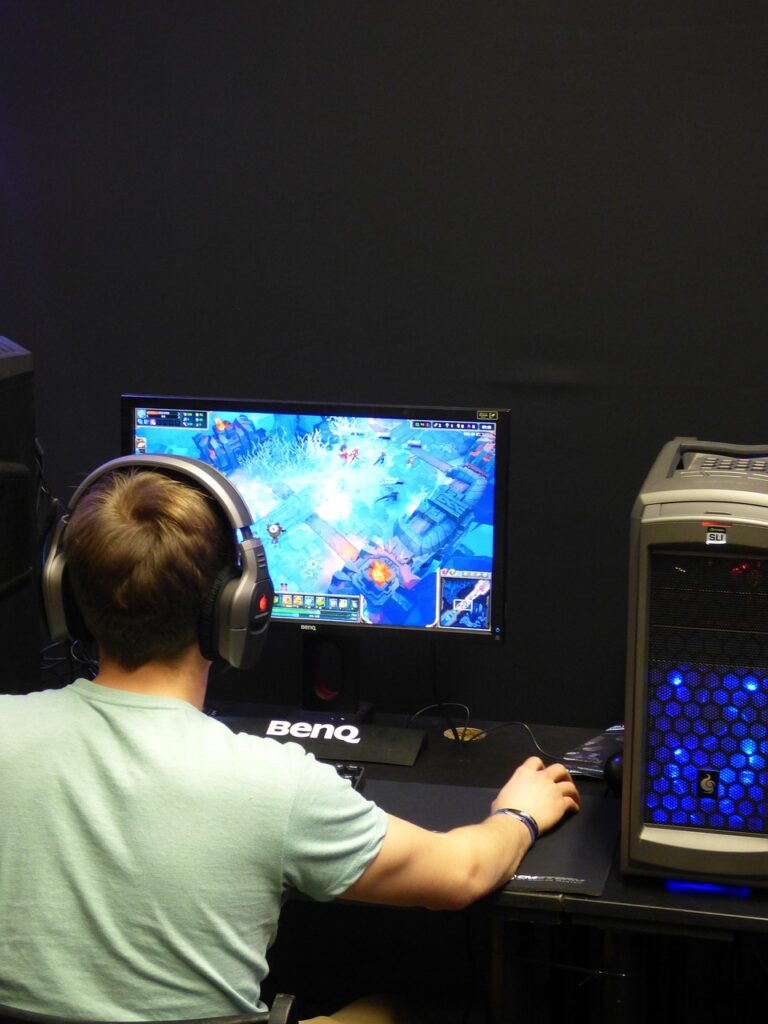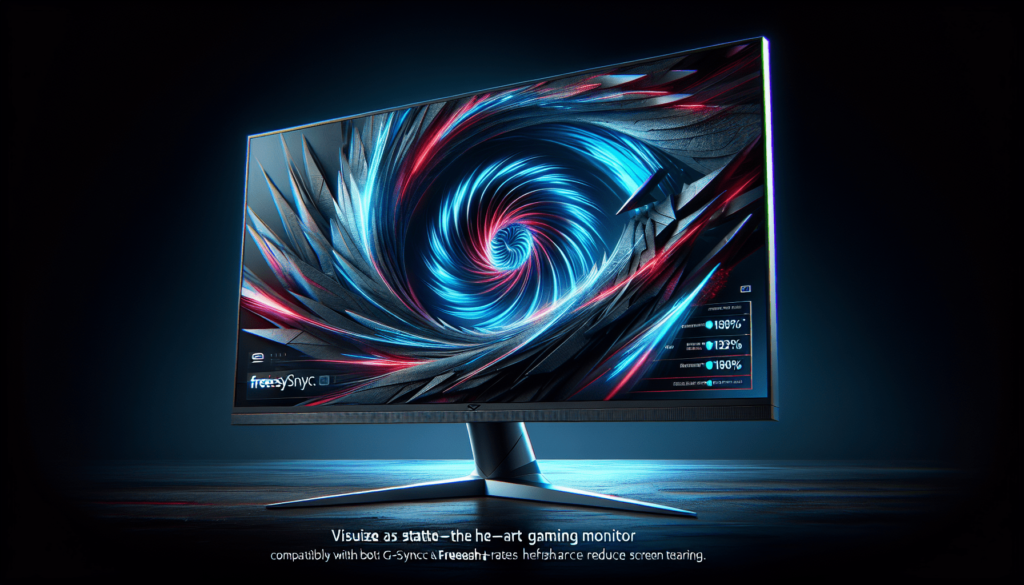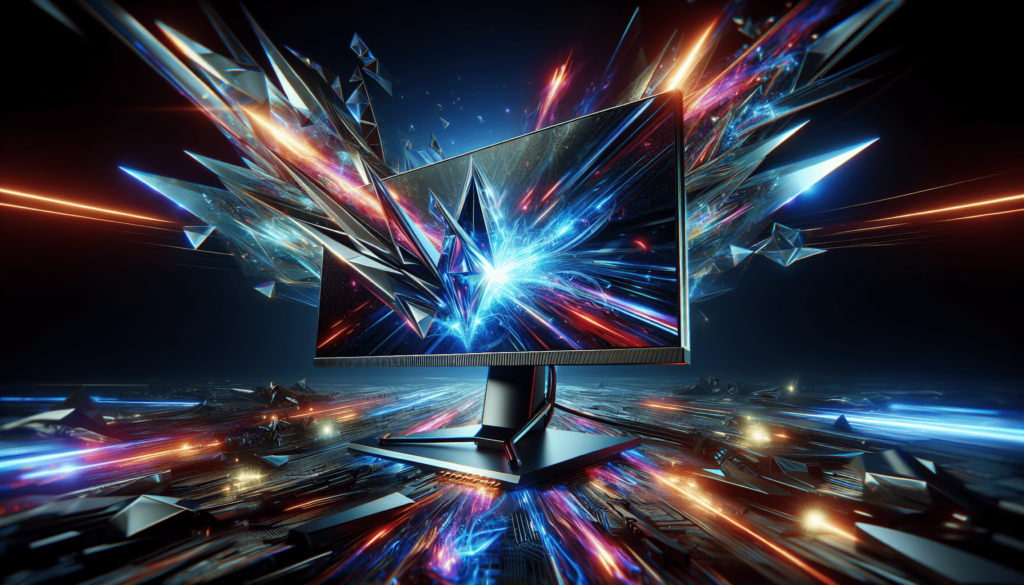What Is G-Sync And FreeSync In Gaming Monitors?
Gaming enthusiasts and tech aficionados, brace yourselves for an exhilarating journey into the world of gaming monitors, as we unravel the mystery surrounding two groundbreaking technologies: G-Sync and FreeSync. These dynamic features hold the promise of delivering buttery-smooth graphics and an unparalleled gaming experience. In this article, we will delve into the ins and outs of G-Sync and FreeSync, demystifying their functionality and highlighting their impact on the gaming industry. So, fasten your seatbelts and get ready to explore the wonders of G-Sync and FreeSync in gaming monitors.
G-Sync and FreeSync: An Overview
G-Sync and FreeSync are two popular technologies designed to enhance the gaming experience on monitors. These technologies aim to eliminate screen tearing, stuttering, and input lag, ultimately providing a smoother and more immersive gaming experience. While they achieve a similar goal, G-Sync and FreeSync are proprietary technologies developed by different companies – G-Sync by Nvidia and FreeSync by AMD.
Definition of G-Sync
G-Sync is a technology developed by Nvidia that synchronizes the refresh rate of the monitor with the graphics card’s output. By doing so, G-Sync prevents screen tearing, a visual artifact that occurs when the monitor’s refresh rate and the graphics card’s frame rate are out of sync. With G-Sync, the monitor adjusts its refresh rate dynamically to match the graphics card’s frame rate, resulting in tear-free and smooth gameplay.
Definition of FreeSync
In contrast, FreeSync is a technology developed by AMD. Similar to G-Sync, FreeSync aims to eliminate screen tearing and stuttering. It achieves this by using an open standard called Adaptive Sync. FreeSync allows the monitor’s refresh rate to adapt to the graphics card’s output, ensuring a seamless and tear-free gaming experience. Unlike G-Sync, FreeSync is available across a wide range of monitors from different manufacturers.
Comparison of G-Sync and FreeSync
While both G-Sync and FreeSync offer similar benefits, there are some key differences between the two technologies. The most notable difference is that G-Sync requires a proprietary chip inside the monitor, making G-Sync monitors generally more expensive than their FreeSync counterparts. On the other hand, FreeSync monitors tend to be more affordable, as they don’t require such proprietary hardware.
Another difference lies in their compatibility. G-Sync is only compatible with Nvidia graphics cards, while FreeSync is compatible with both AMD and Nvidia graphics cards. This cross-compatibility makes FreeSync a more flexible and accessible option for gamers using different graphics card brands.
When it comes to performance, G-Sync and FreeSync generally offer similar results in terms of eliminating screen tearing and delivering smooth gameplay. However, G-Sync monitors have stricter requirements and are commonly associated with higher quality control standards, ensuring a more consistent experience.
The choice between G-Sync and FreeSync ultimately comes down to individual needs and preferences, as well as budget considerations. In the next sections, we will explore each technology further to help you make an informed decision.

Understanding G-Sync
How G-Sync Works
G-Sync works by physically connecting the monitor to the graphics card through a dedicated hardware module inside the monitor. This module communicates with the graphics card, allowing the monitor to change its refresh rate dynamically. When the graphics card renders a new frame, it signals the monitor to refresh, ensuring that each frame is displayed without tearing.
Benefits of G-Sync
One of the main benefits of G-Sync is its ability to provide a tear-free gaming experience. By synchronizing the monitor’s refresh rate with the graphics card’s frame rate, G-Sync eliminates the visual artifacts caused by screen tearing. This results in smoother gameplay and a more immersive experience.
G-Sync also reduces input lag, which is the delay between a user’s input (such as pressing a key or moving the mouse) and the corresponding action on the screen. By dynamically adjusting the refresh rate, G-Sync minimizes input lag, providing a more responsive gaming experience.
Requirements for G-Sync
To take advantage of G-Sync, you’ll need a G-Sync compatible monitor and an Nvidia graphics card that supports G-Sync. It’s important to note that not all Nvidia graphics cards are G-Sync compatible, so make sure to check the specifications of your graphics card. Additionally, G-Sync requires a DisplayPort connection for optimal performance, although some monitors may support G-Sync over HDMI.
G-Sync Compatible vs. G-Sync
Nvidia introduced G-Sync Compatible as an expansion of the G-Sync ecosystem. G-Sync Compatible monitors are not equipped with Nvidia’s proprietary hardware module but still offer G-Sync-like functionality. These monitors have passed Nvidia’s validation tests to ensure a smooth variable refresh rate experience.
While G-Sync Compatible monitors provide a more budget-friendly option, they may not have undergone the same rigorous certification process as standard G-Sync monitors. As a result, their performance may not be as consistent across a wide range of games and settings.

Exploring FreeSync
How FreeSync Works
FreeSync operates using a different approach compared to G-Sync. It relies on the Adaptive Sync open standard, which is part of the DisplayPort 1.2a specification. Rather than requiring a dedicated hardware module, FreeSync utilizes the existing interface between the monitor and graphics card to enable dynamic refresh rate adjustments.
When using FreeSync, the graphics card communicates with the monitor, allowing the monitor to match its refresh rate to the graphics card’s frame rate. This synchronization eliminates screen tearing and stuttering, offering an uninterrupted and smooth gaming experience.
Advantages of FreeSync
One of the main advantages of FreeSync is its wider availability compared to G-Sync. FreeSync is an open standard, allowing monitor manufacturers to implement the technology without any licensing fees. As a result, FreeSync monitors are generally more affordable than G-Sync monitors.
Additionally, because FreeSync is compatible with both AMD and Nvidia graphics cards, it provides greater flexibility for gamers. Whether you have an AMD or Nvidia graphics card, you can enjoy the benefits of FreeSync without being limited to a specific brand.
Requirements for FreeSync
To use FreeSync, you’ll need a FreeSync compatible monitor and a graphics card that supports Adaptive Sync. Most modern graphics cards, including those from both AMD and Nvidia, support Adaptive Sync. However, it’s essential to check the specifications of your graphics card to ensure compatibility.
Similar to G-Sync, FreeSync performs optimally when connected using a DisplayPort connection. However, FreeSync is also available over HDMI for those who prefer using an HDMI connection.
FreeSync Premium and FreeSync Premium Pro
AMD has expanded the FreeSync lineup with the introduction of FreeSync Premium and FreeSync Premium Pro. FreeSync Premium offers a baseline experience with a minimum refresh rate of 120Hz and support for HDR content. FreeSync Premium Pro takes it a step further by incorporating stricter requirements, including a minimum refresh rate of 120Hz, low frame rate compensation (LFC) support, and more advanced HDR capabilities.
These variations of FreeSync provide users with additional options and features, catering to different gaming preferences and budgets.

G-Sync vs. FreeSync
Now that we have a better understanding of G-Sync and FreeSync individually, let’s compare them across various factors to help you decide which technology suits your needs.
Price
When it comes to price, FreeSync generally has an advantage over G-Sync. Since FreeSync is an open standard and does not require proprietary hardware, FreeSync monitors tend to be more affordable. On the other hand, G-Sync monitors with the proprietary hardware module are often more expensive. However, with the introduction of G-Sync Compatible monitors, Nvidia has expanded the range of more affordable options for G-Sync.
Compatibility
G-Sync is only compatible with Nvidia graphics cards, while FreeSync is compatible with both AMD and Nvidia graphics cards. This cross-compatibility gives FreeSync an edge, as it allows gamers to use FreeSync monitors regardless of their choice of graphics card brand.
Input Lag
Both G-Sync and FreeSync contribute to reducing input lag by synchronizing the monitor’s refresh rate with the graphics card’s frame rate. Therefore, both technologies offer similar benefits in terms of improving responsiveness in games.
Refresh Rate Range
The refresh rate range refers to the range of refresh rates within which G-Sync or FreeSync is active. G-Sync typically offers a broader refresh rate range compared to FreeSync, which means G-Sync monitors can provide a smoother variable refresh rate experience across a wider range of frame rates. However, some FreeSync monitors now support a wide refresh rate range, narrowing the gap in this aspect.
Frame Syncing Method
G-Sync and FreeSync utilize different methods to achieve frame syncing. G-Sync relies on a proprietary hardware module, while FreeSync uses the Adaptive Sync open standard. The choice between the two methods often comes down to personal preference and compatibility with the user’s graphics card.
Adaptive Sync Standards
While FreeSync is based on the Adaptive Sync open standard, G-Sync remains a proprietary technology. Adaptive Sync is an open standard supported by DisplayPort 1.2a, allowing for broader adoption and implementation by monitor manufacturers.
Adoption by Manufacturers
Due to its proprietary nature, G-Sync has a more limited range of monitor options compared to FreeSync. However, Nvidia’s introduction of G-Sync Compatible monitors has expanded the options for those looking to experience G-Sync.
FreeSync, being an open standard, has gained widespread support from various monitor manufacturers. This results in a larger selection of FreeSync monitors across different price ranges and specifications.
DisplayPort and HDMI Support
Both G-Sync and FreeSync generally perform optimally when connected using DisplayPort. However, FreeSync also supports HDMI connections, providing more options for users who prefer HDMI or have monitors with limited connectivity options.
Performance Impact
Both G-Sync and FreeSync have minimal performance impacts, as their main goal is to enhance gaming visuals and eliminate screen tearing rather than affecting the overall performance of a game. The impact on performance is negligible, and most users will not notice any significant differences.

Exploring the World of G-Sync And FreeSync
Factors to Consider When Choosing
When deciding between G-Sync and FreeSync, several factors should be considered. These factors include budget, graphics card compatibility, monitor specifications, and personal preferences.
Budget
If budget is a significant consideration, FreeSync may be the better option. FreeSync monitors generally offer more affordable prices due to the open standard nature of the technology. However, with the introduction of G-Sync Compatible monitors, Nvidia has expanded the options for those looking to experience G-Sync on a budget.
Graphics Card Compatibility
If you already have a graphics card, it’s crucial to check its compatibility with either G-Sync or FreeSync. G-Sync is only compatible with Nvidia graphics cards, while FreeSync is compatible with both AMD and Nvidia graphics cards. Make sure your graphics card supports the technology you are interested in to ensure compatibility.
Monitor Specifications
Consider the specifications of the monitor you are considering. Look at the refresh rate range, input lag, resolution, and other features that are important to you as a gamer. Compare these specifications between G-Sync and FreeSync monitors to find a monitor that best suits your needs.
Preferences and Gaming Needs
Lastly, consider your own preferences and gaming needs. Think about whether you prioritize affordability, compatibility with different graphics cards, or specific features. G-Sync and FreeSync each have their advantages and disadvantages, so choose the technology that aligns with your gaming priorities.

Conclusion
In conclusion, both G-Sync and FreeSync technologies aim to provide a tear-free and smooth gaming experience by synchronizing the monitor’s refresh rate with the graphics card’s frame rate. G-Sync is Nvidia’s proprietary technology, while FreeSync is an open standard supported by AMD and Nvidia.
G-Sync monitors tend to be more expensive due to the requirement of a proprietary hardware module, but offer a more consistent experience and a broader range of refresh rates. FreeSync monitors, on the other hand, are more affordable and offer compatibility with both AMD and Nvidia graphics cards.
Ultimately, the choice between G-Sync and FreeSync comes down to personal preference, budget, and compatibility with your system. Consider factors such as price, compatibility, input lag, refresh rate range, and the syncing method when making your decision. With either technology, you can elevate your gaming experience and enjoy tear-free visuals for a more immersive gameplay experience.




